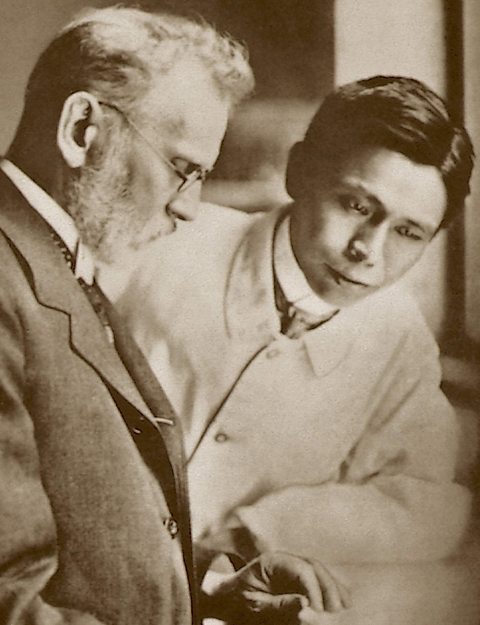Magic bullets
Following Louis Pasteur’s germ theory and Robert Koch’s work on identifying specific bacteriaSingle-celled microorganisms, some of which are pathogenic in humans, animals and plants. Singular is bacterium. researchers began to find ways of killing germs inside the body without harming healthy human tissue. This idea was called a ‘magic bullet’.
Paul Ehrlich and Sahachiro Hata
Paul Ehrlich had worked with Koch on research using industrial dyes to stain bacteria to make them easier to identify. Ehrlich wanted to take this idea further. He had a theory that some chemicals might be able to kill specific germs without harming healthy human tissueA group of similar cells that carry out the same function, eg muscle tissue.

Ehrlich investigated chemicals that would kill syphilisA sexually transmitted disease which causes degeneration to the brain and body if untreated. germs without harming human cells. He tested various substances by infecting rabbits with syphilis, then giving them a chemical to see whether the rabbit would be cured without the medication making them ill.
Ehrlich and his assistant, the Japanese bacteriologist Sahachiro Hata, tried hundreds of different compounds. Eventually, when retesting some of the chemicals they had already tried, Hata discovered that the compound salvarsan was effective. As it was the 606th compound they had tried, it was named Salvarsan 606.
After successful human trials, Salvarsan 606 was made available. It was the first magic bullet - a chemical that could cure people of syphilis.
Why were magic bullets significant?
Salvarsan 606 was a key breakthrough. It led to research into other chemicals that might be magic bullets.
In 1935, Gerhard Domagk discovered Prontosil - an antibacterial drug - which became the second magic bullet. Prontosil killed a type of bacteria known as streptococcal, which could cause life-threatening infections.
The discovery of magic bullets by Ehrlich’s research team also led to work on finding natural substances that could target infections in the body. This work led to the discovery and development of penicillinA type of antibiotic discovered in 1928 by Alexander Fleming. Antibiotics are substances that slow down or stop the growth of bacteria.